Life Science
7th Graders - Life Science - it's alot like Biology!!
Remember to be successful, you must be able to budget your time!! Coordinate all your classes and the homework required. It will be easy to fall behind and difficult to catch up. Work hard, stay on top of your assignments. Make sure you watch the video tutorials for these units, they seem to help.
-
Follow the links below to specific Chapter resources:
-

Ch. 1 - Metric System Measurements
Video Length: 21:51
This unit contains: International System of Units, Meter, Liter, cm3, metric stairs, density, Graphing (x,y), slope, Graphing line slopes, using and cancelling units.
-
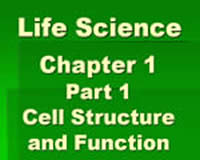
Ch. 1 - Cell Structure and Function
Video Length: 23:25
This unit contains: The Cell Theory; Plant vs animal cells; Cell History w/Robert Hooke, Leeuenhoek Microscopes; Cell organelles including: Nucleus, nucleolus, ribisomes, bilipid cell membranes, mitochondria, golgi complex, rough & smooth ER and other cellular structures
-

Ch. 1 - Part 2: Cell Structure and Function
Video Length: 18:18
This unit contains: Cellular Chemistry, Protons, neutrons and electrons, Element vs Compounds, Chemical formulae, Carbos, Lipids, Proteins and Nucleic Acids,products vs reactants, Organic v Inorganic; Diffusion v osmosis; Active v Passive transport
-
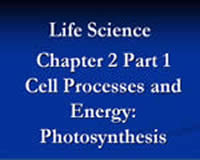
Ch. 2 - Part 1: Cell Processes and Energy
Video Length: 17:02
This unit contains: Light & Dark Photosynthesis Reactions;ATP, ADP, NADPH, NADP+, Stroma, Grana, Calvin Cycle vs Krebs Cycle, respiration: Aerobic v anaerobic, mitochondra: Cristae and the Matrix
-

Ch. 2 - Part 2: Cell Processes and Energy
Video Length: 16:24
This unit contains: Cell division, Mitosis, IPMAT, Details on Interphase, Prophase, Metaphase, Anaphase, Cytokinesis and Telophase; Chromosome structure, DNA Structure, Nucleotides,A-T, C-G, DNA Replication
-

Ch. 3 - Part 1 Genetics: The Science of Heredity
Video Length: 21:07
This unit contains:Chapter 3 and 4 information on genetics and human genetics, Mendellian genetics, dominant vs recessive, genes, alleles, phenotype, genotype, homozygus, heterozygus, Punnett squares,
-

Ch. 3 - Part 2: Genetics: Protein Synthesis
Video Length: 19:46
This unit contains: Protein Synthesis, DNA vs RNA structure, rRNA, mRNA, tRNA, Transcription, Translation, ribisomes, 20 amino acids, codons, anticodons
-

Ch. 4 - Modern Genetics
Video Length: 21:07
This unit contains: Chapter 3 and 4 information on genetics and human genetics, Mendellian genetics, dominant vs recessive, genes, alleles, phenotype, genotype, homozygus, heterozygus, Punnett squares,
-
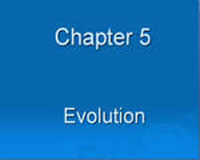
Ch. 5 - Evolution
Follow the "PPT" button below and see links to two typical PowerPoint presentions students will see in their Public HS Biology classes. There is also my PPT on "Evolution Basics". I've put together two fairly detailed PPTs debunking the typically taught "Icons of Evolution". The "Extra Videos" button below links to 15 short videos showing major problems w/ evolution and aging the geologic record/fossils.
-

Ch. 6 - Earth's History
Follow the PPT & Extra Videos links below to view PowerPoints and 15 extra videos helping to explain some of the major problems with aging the Geologic Record. We will explain the THEORY of evolution and then follow up w/ Intelligent design and Creation expainations for God's magnificent creation.
-

Ch. 7 - Part 1: Living Things
Video Length: 13:56
This unit contains: The 6 characteristics of Living Things, Basic 4 Organic Chemicals, Spontaneous generation, Redi & Pasteur experiments, Autotrophs, Heterotrophs, Homeostasis.
-

Ch. 7 - Part 2: Modern Taxonomy
Video Length: 8:49
This unit contains: Taxonomy; Aristotle, Linnaeus, KPCOFGS, binomial nomenclature protocols, Prokaryotes vs Eukaryotes, Monera, Archaebacteria, Eubacteria, Protisa, Fungi, Plantae, Animalia general descriptions
-
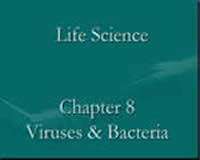
Ch. 8 - Viruses and Bacteria
Video Length: 15:44
This unit contains: Virus defined and structure, Virus types, protein coat genetic material, Virus replication, Kingdom Archaebacteri- anaerobic methanogens, Kingdom Eubacteria, Schizophyata, Cyanophyta, Coccus, Bacillus and Spirillum, fission vs conjugation.
-

Ch. 9 - Part 1: Protista
Video Length: 25:48
This unit contains: Kingdom Protista, the "Junk Drawer" Kingdom, Animal-like: Sarcodina, Ciliophora w/ conjunction, Sporozoa, Zoomastigina. Fungus-like: slime molds, Plant-like, Euglenophyta, Pyrrophyta, Chrysophyta, algaes
-

Ch. 9 - Fungus
Video Length: 14:35
This unit contains: Kingdom Fungi Characteristics, Heterotrophic, Hyphae, Mycelium, Reproduction: Gametangia, sporangia, conidia, buds: Phyla: OOmycota, Zygomycota, Ascomycota, Basidiomycota, Deuteromycota. Symbiotic Lichen.
-

Ch. 10 - Introduction to Plants
Video Length: 35:36
This unit contains: Introduction to the Plant Kingdom, 5 adaptations to live on land, Tracheophyta vs Bryophyta, Phloem, cambium and xylem, Alternation of generations, haploid gametophyta, diploid sporophyta, Photosynthesis revisted, primative tracheophytes
-

Ch. 11 - Part 1: Seed Plants
Video Length: 12:59
This unit contains: Plant classification: Bryophyta, Tracheophyta, Gymnospermae, Angiospermae. Monocotyledoneae vs Dicotyledoneae characteristics, phototropic, geotropic, thigmotropic
-

Ch. 11 - Part 2: Seed Plants
Video Length: 37:54
This unit contains: Seed structure, Internal Leaf structure, root structure, Twig structure, Leaf arrangement, leaf veination, leaf edge, margins, flower structures , monocot v dicot
-

Ch. 12 - The Animals
Video Length: 18:30
This unit contains: Kingdom Animalia; Metazoa characteristics, Invertebrate vs Invertebrate, cell, tissue to organism, spherical, radial, bilateral symmetry, anatomical posistions, Coelum types.
-

Ch. 12 - Part 1: Porifera and Cnidaria
Video Length: 17:57
This unit contains: Kingdom Animalia; Porifera charcteristics and structure, Cnidaria structure, Body styles - Medusa or Polyp, nematocyts, along with functions.
-

Ch. 12 - Part 2: The Worms
Video Length: 33:49
This unit contains: The worms; Platyhelminthes structure and function, , flatworms, tapreworms, flukes; Nematoda structure and function, round worms, hookworms, heartworms, Ascaris sp. Annelida structure and functions, examples. Earthworm anatomy physiology.
-

Ch. 13 - Part 1: Phylum Mollusca
Video Length: 19:08
This unit contains: Phyla Mollusca anatomy physiology, structures and function, Classes Gastropoda, Cephlapoda and bivalva, Clam dissection descriptions, squid dissection descriptions
-

Ch. 13 - Part 2: Phylum Arthropoda
Video Length: 22:14
This unit contains: Phylum Arthropoda taxonomy: Crustacea, Arachnida, Insecta, Chilopoda, Diplopoda. Crayfish and Grasshopper anatomy and physiology. 14 Insect orders w/ description and examples - "Need-to-Knows"
-

Ch. 13 - Worksheet Help
Video Length: 8:53
Here's some very detailed help on many of the Arthropod worksheets. There is specific help for: The Grasshopper (pg 61), Gas Exchange in Living Organisms (pg64), Excretion in Living Organisms (pg 65), and Structure of the Crayfish (pg 69)
-

Ch. 13 - Part 3: Phylum Echinodermata
Video Length: 14:27
This unit contains: Gen 1:20-21, Classes Asteroidea, Echinoidea, Holothuroidea, Starfish anatomy and physiology,starfish dissection diagrams, water vascular system w/: madreporite, stone, ring, radial and lateral canals
-

Ch. 14 - Phylum Chordata: Part 1:
Video Length: 8:36
This unit contains: an Introduction to phyla Chordata. 4 main Characteristics of all chordates, Urochordata-Tunicates; Cephalochordata - Lancelets, Amphioxous sp, 7 classes of Vertebrata subphyla and the main vertebrate characteristics,
-

Ch. 14 - Phylum Chordata: Part 2: The Fishes
Video Length: 20:09
This unit contains: 3 main groups: Agnatha - Hagfish, Lamprey, Chondrichthyes - cartilaginous fishes, Shark Anatomy physiology, shark dissection diagrams, ; Osteichthyes - boney fishes. Perch internal and external diagrams
-

Ch. 14 - Phylum Chordata: Part 3: Reptiles and Amphibians
Video Length: 15:42
This unit contains: Class Amphibia w/orders Anura-frogs,toads; Caudata - Newts, salamanders,Class Reptilia w/orders Squamates-snakes,lizards; Crocodylia-alligators,crocodiles; Chelonia-turtles,tortoises
-

Ch. 15 - Birds and Mammals
Video Length: 00:00
This unit contains: Bird diversity & characteristics, anatomy physiology, feather anatomy and types; Mammal characteristics, classification, Monotemata, Marsupialia and Placental mammals, precocial & altrical, the 15 "Need-to-Know" orders.
-

Ch. 16 - Healthy Body Systems
Video Length: 18:27
This unit contains: The cell Theory, 4 tissue types: muscle, connective,nervous, epithelial, Introduction of the 11 recognized human body systems:Circulatory, Digestive,Muscle, Skeletal, Integumentary, Respiratory, Nervous, Reproduction, Immune, Excretory, Endocrine.
-

Ch. 16 - Worksheet Help
Video Length: 17:33
This unit contains: I can't beleive how easy I am w/ you miserable Toads!! To devote an entire video tutorial to help w/ a few hard worksheets.... you guys owe me... big time... Hugs
-

Ch. 17 - Integumentary System
Video Length: 7:59
This unit contains: The skin: Epidermis, dermis, hypodermis; subcutaneous, adipose tissue, melanocytes.
-

Ch. 17 - Skeletal System
Video Length: 22:58
This unit contains: Skeletal System: Axial, Appendicular, Cranial bones, Bone stucture: periostium, osteocyte, lamella, spongy & compact bone. 6 Joint types, tendons, ligament
-
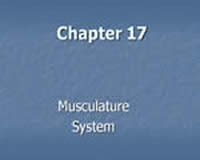
Ch. 17 - The Musculature System
Video Length: 18:02
This unit contains: The Muscles: Anatomy, physiology: Striated, Smooth, Cardiac. Antagonistic pairs: Flexor, extensor. origin insertion, Actin, myosin, myofibrils, sarcomeres. Digestion: mechanical, chemical, peristalsis, NTK all Digestive organs, pathway & accessory organs
-

Ch. 18 - The Digestive System
Video Length: 22:29
This unit contains: The Muscles: Anatomy, physiology: Striated, Smooth, Cardiac. Antagonistic pairs: Flexor, extensor. origin insertion, Actin, myosin, myofibrils, sarcomeres. Digestion: mechanical, chemical, peristalsis, NTK all Digestive organs, pathway & accessory organs
-

Ch. 19 - The Circulatory System
Video Length: 26:03
This unit contains: Blood, Plasma makeup, RBC, WBC, Platelets, Arteries, Veins, Capillaries, Heart anatomy, physiology. Pulmonary, Renal, Coronary, Hepatic, Systemic, Lymphatic pathways,
-

Ch. 20 - The Respiratory System
Video Length: 17:22
This unit contains: The upper respiratory system: Nasal passages, pharynx, glottis, eppiglottis, larynx, ciliated epithelium, trachea, bronchi, bronchioli, alveoli, active & diagrams
-

Ch. 20 - The Excretory System
Video Length: 12:24
This unit contains: structure and function, kidneys, ureter, bladder, urethra, nephron, accessory organs: skin, sweat glands, liver & lungs.Kidney cortex, medulla, pelvis Nephron: Glomerulus, Bowman's Capsule, Loop of Henle, Nephron & Excretory System diagrams
-

Ch. 21 - The Immune System
Video Length: 00:00
This unit contains: No Video tutorial for this unit yet, but the PowerPoint includes:Function; pathogen types,3 lines of Body defenses, histamines, WBC: Phagocytes, Basophil, Eosinophil, Neutrophil, T cell, B Cell, Lymphocytes antigen
-

Ch. 22 - The Human Senses
Video Length: 25:09
This unit contains: Vision, Auditory, Olfactory, Taste, Touch: Eye anatomy, fovea, rods, cones, Ear anatomy: malleus, incus, stapes, eustachian tube, cochlea, semicircular canals,Olfactory structures, taste buds & pores, papilla, 5 touch receptors
-

Ch. 22 - The Nervous System
Video Length: 26:27
This unit contains: Central & peripheral nervous systems, Structure and function of neurons: axon, dendrites. Sensory, interneuron, motor neuron, Reflex arc, Brain structure & function. Cerebrun, Cerebellum, Medulla, meninges. Brain lobes neuron diagram, brain diagram
-

Ch. 23 - The Endocrine and Reproductive Systems
Video Length: 00:00
This unit contains: nuttin' .... to be honest, I haven't done much w/ this unit as of this point. Hang in there, it'll be here before you know it!!
Ain't no More Life Science "Stuff"


